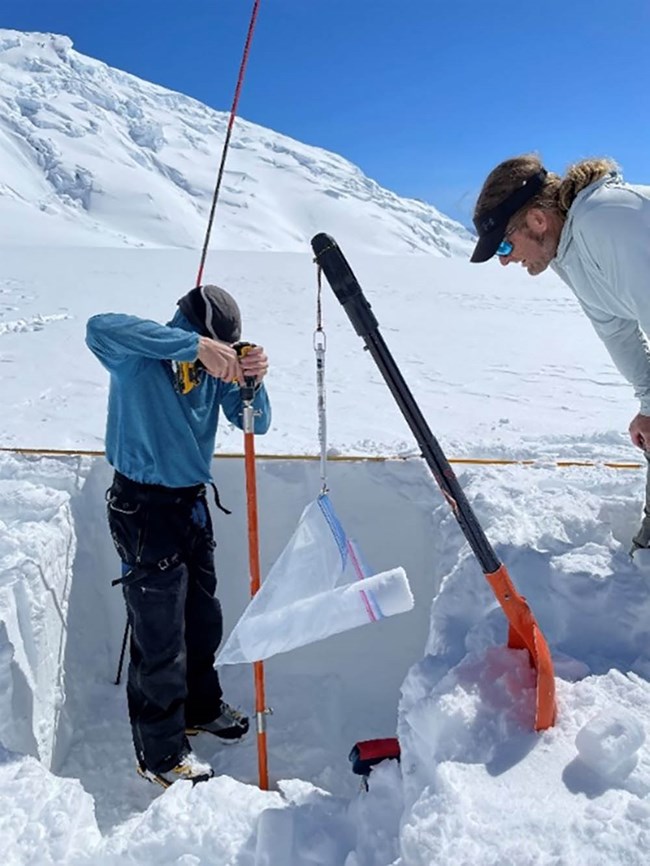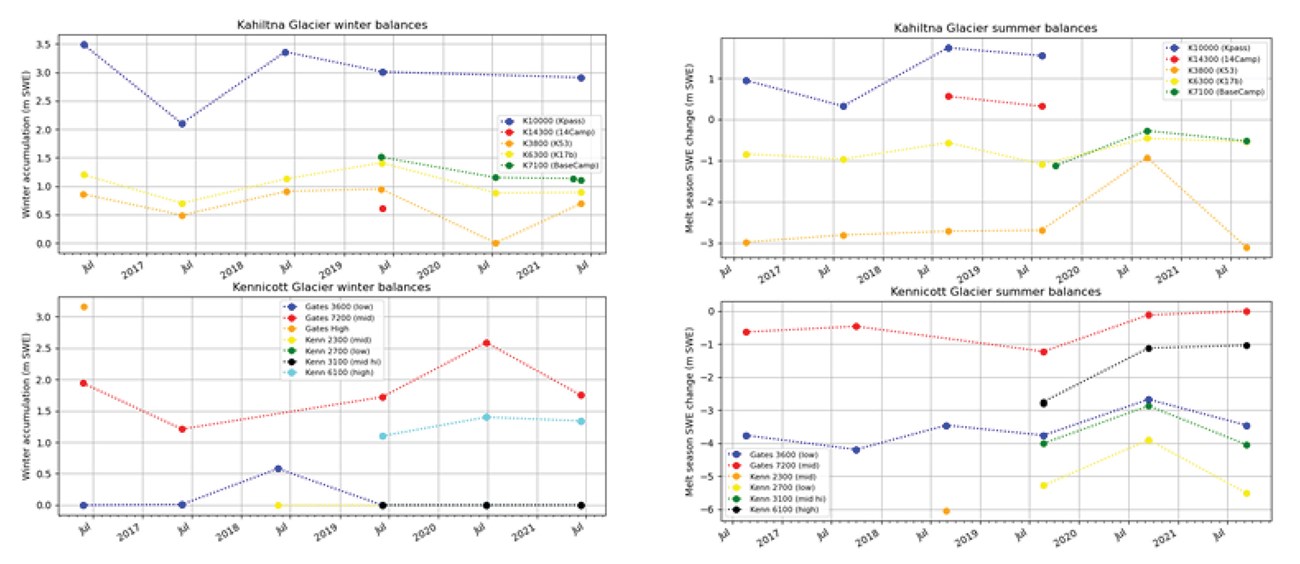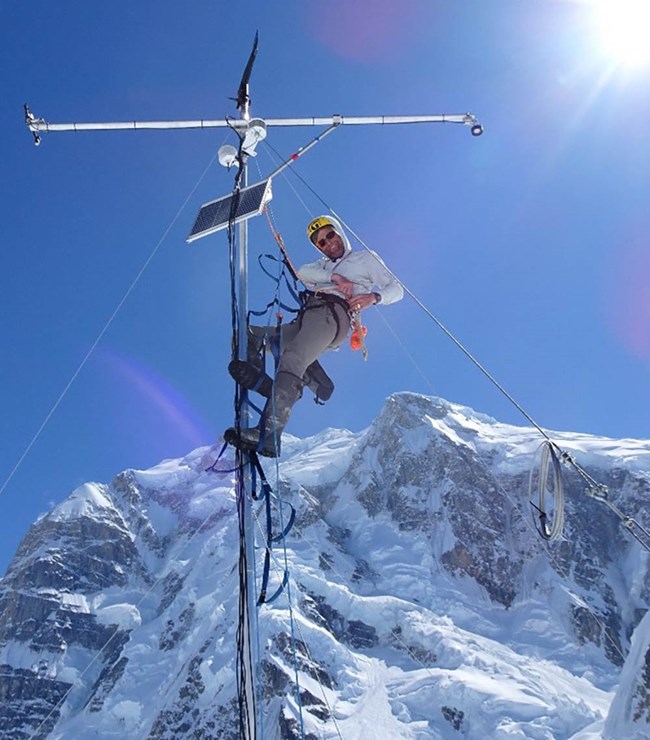Last updated: September 27, 2022
Article
Central Alaska Glacier Surveys 2022

Central Alaska Network Principal Investigator Michael Loso and Scientist-in-the-Parks intern Shane Scoggin surveyed Kennicott Glacier and Kahiltna Glacier most recently in the spring of 2022. A new survey is planned for September 2022. Five sites, with at least one stake or weather station each, were visited at each glacier. This survey work is ongoing.
Results
Importantly, these are preliminary data from measurements that have not been adjusted to account for snowfall or melt that occurs early in spring or late in the fall. But these raw measurements nonetheless convey a sense of the variability in seasonal accumulation (snowfall) and ablation (melt) before spring visits.
These datasets are not finalized, but they can be used to illustrate the trends of mass balance data through 2021 (the last year for which we currently have complete data).

Winter balances (above left) reflect the cumulative snow that falls over the winter at different sites. Winter snowpack increases from no snow at the lower sites to a couple of meters at higher elevations. Summer balances (above right) are typically negative because there is usually more melting than there is summer snowfall at the sites we visit. Summer balance values are more negative at lower elevations where there is more melt, and sometimes positive at higher elevations where there is summer snowfall.
Why Glacier Monitoring is Important
Glacier growth and retreat is linked directly to climate, which makes them valuable indicators of climate change and its consequences. As Alaska’s glaciers retreat, they have the potential to contribute significantly to sea level rise, limit water supply to major rivers, reorganize watersheds, and trigger landslides. A better understanding of the local trends of this vital sign will improve our ability to anticipate the scale and timing of such events and to strengthen our preparedness and response. The glaciers featured in this monitoring project are well known because they are used frequently for recreation and are strong assets to their respective parks and communities.
The goal of this monitoring is to document the long-term climate-driven changes at Kahiltna and Kennicott glaciers. To interpret this relationship, we need to record when and where mass is gained or lost at various sites on both glaciers and details of the local microclimates. This is done by tracking annual balance, which is the net mass a glacier gains or loses over the course of a year (accumulated snow + summer melt). A good comparison to climate requires good weather data, which is collected by weather stations positioned on or near the glaciers.

How We Monitor Glaciers
Every spring and fall, scientists revisit established sites on the Kahiltna and Kennicott glaciers to measure accumulated or melted snow and ice. In the spring, snow pits are dug to determine the amount of snow accumulated since the previous season. If the bottom can’t be reached by digging, a snow core is extracted from the bottom of the pit using a drill-powered snow corer. Snow density is measured along this profile by weighing snow of a known volume. Vertical stakes, up to 12 meters long, are installed to measure accumulation and melt based on how much of the stake is buried or exposed when they are revisited. Weather stations are positioned on the glaciers to record accurate and ongoing readings of precipitation, temperature, wind speed, and solar radiation on the glacier surface. The work on Kahiltna Glacier began in 1991 and has been expanded in recent years. The work on Kennicott Glacier began in 2015.
How Monitoring This Vital Sign Can Help Park Managers
- Maintain up-to-date information on the status of glaciers – some of the park’s most unique and spectacular resources – for scientists and visitors alike
- Understand the local impact of climate change on their park with direct and familiar examples
- Anticipate the future trajectory and position of glaciers to inform park infrastructure and resource planning
- Contribute valuable data to scientific research in fields like glaciology, meteorology, geomorphology, and more!
